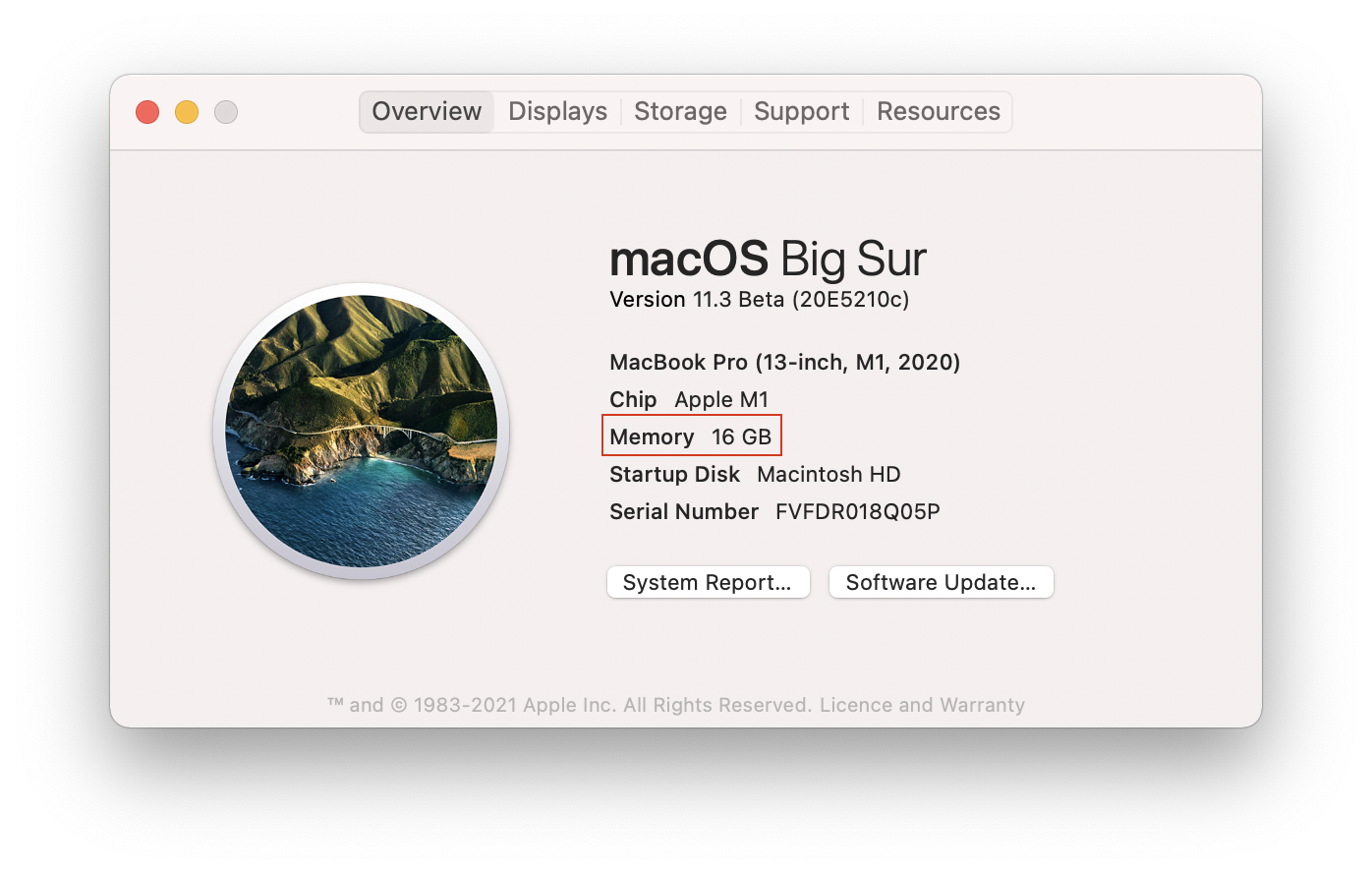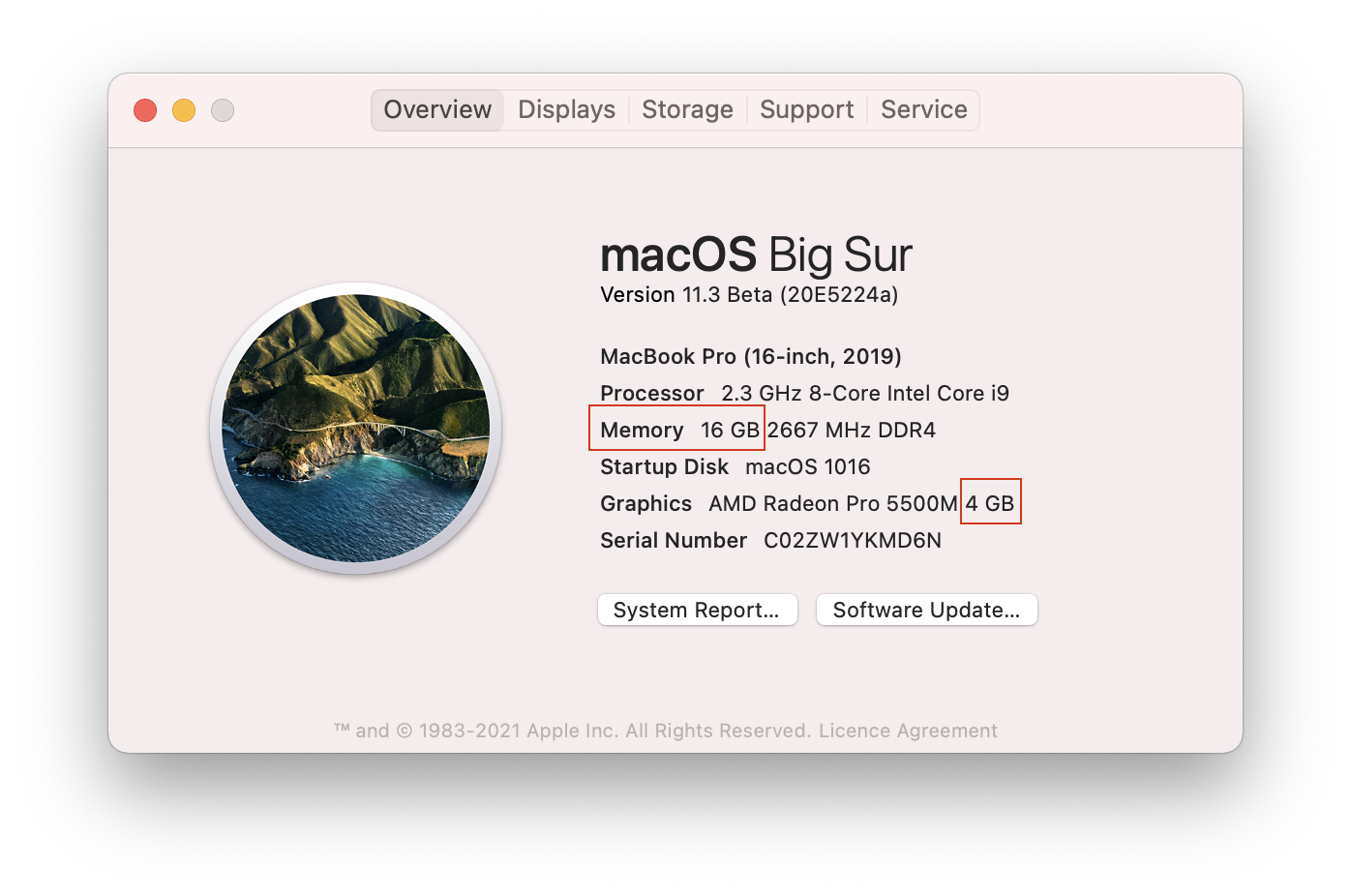In Parallels Desktop on a Mac with Apple M-series chip, all supported operating systems that can be used as virtual machines can use system memory for graphics purposes. Using the system memory for graphics is the most efficient way that provides the best experience working with virtual machines on Mac computers with Apple M-series chips.
Mac with Apple M-series chip - no dedicated graphics memory:

Mac with Intel-based processor - graphics adapter with dedicated memory:

Increase video memory
If you have some graphics performance issues, or applications complaining about insufficient resources, changing video memory value can help but it can also make the situation even worse. The recommended steps that might help in such cases are:
For Parallels Desktop 17 and newer
1. Open the virtual machine configuration > Hardware > CPU & Memory > Manual and increase both RAM value and the number of virtual CPUs. In most cases, half of the total CPUs will provide optimal performance. Assigning more than half of CPUs for the virtual machine may cause performance degradation for both Mac and VM. Similarly to processors, the best practice is to assign half of Mac's total RAM.

2. If you're playing a game, try lowering display resolution and turning off demanding application settings.
For Parallels Desktop 16 and earlier
1. Open the virtual machine configuration > Hardware > CPU & Memory > increase both RAM value and the number of virtual CPUs within the recommended range.

2. If you're playing a game, try lowering display resolution and turning off demanding application settings.
Note: Since Mac's resources are limited, the RAM value assigned to a virtual machine should not be higher than the recommended values. For example, one can assign 6 GBs to a virtual machine running on a Mac with 8 GBs of RAM. But usually, there are some applications running on the Mac side (ones can be found in Activity Monitor) that also compete for resources. As a result, a memory overcommitment might happen and overall performance will decrease exponentially.
Additional information
Parallels Desktop uses system memory for graphics and manages the amount of video memory allocated to the virtual machine by itself based on the virtual machine's needs. This is the best approach because all guest operating systems supported by Parallels Desktop on M1 Mac computers can use system memory for graphics purposes.
A virtual machine does use the resources of the Apple M-series graphics processing unit (GPU) integrated into the Apple M-series System on a Chip (SoC), though indirectly. The virtual machine relies on the macOS graphics application programming interfaces, or APIs (Metal, OpenGL) but it doesn't have direct access to the graphics processing unit (GPU) or its memory. Guest OS video memory is allocated from Mac's RAM and acts more as a transitional buffer to pass the volumes of data between a virtual machine operating system APIs (Direct3D, OpenGL) and macOS APIs rather than actual storage. So, the amount of virtual graphics memory doesn't need to match physical GPU memory because the usage scenarios are different.
Was this article helpful?
Tell us how we can improve it.